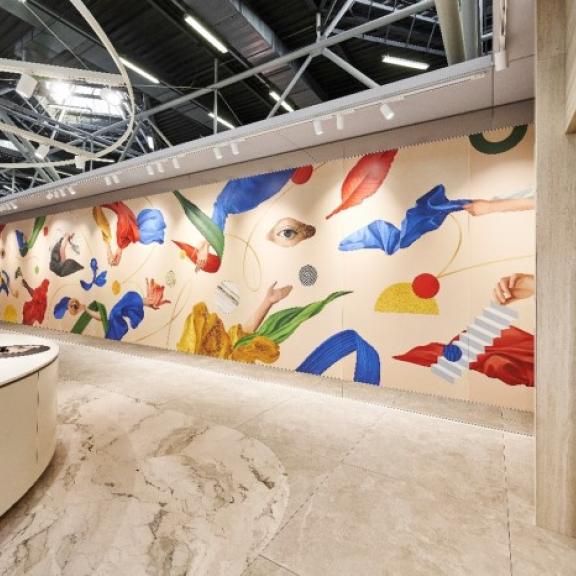How to deal with HR issues
Primary tabs
Explore the options available for managing human resources in your practice, and specific HR issues interior designers can face

Every interior designer whose practice requires them to employ people full time or part time, or for specific projects, becomes involved with human resources (HR) issues. To deal with them effectively, efficiently and, above all, in accordance with employment law, there are a number of different approaches you might take.
It is vital to understand what the law demands of you when you employ staff, and keeping up with changes in the law is also crucial. There are a number of ways in which you might approach HR issues including investing in specialist HR software, outsourcing to a consultancy, or using the BIID’s HR advice service. Take a look at the options below and find out which HR issues interior designers may encounter.
Invest in HR software
Software can help a small practice deal with some HR issues such as recording absences, managing expenses, and integrating with accounting software for payroll. It is important to check any HR software has functions you need now, as well as those that allow for any business growth you have planned. There are free versions available, but bear in mind that these will have limits that might make them unsuitable. Alternatively, providers may offer a free trial period that allows you to check whether the software suits you.
As with any software, it’s important that it is compatible with what you’re already using. It is also vital to check its security because of the important information it will hold.
Outsource HR support
For a smaller business, employing a HR adviser does not make economic sense. However, if you don’t like the idea of dealing with HR yourself, because of reasons such as time spent on HR matters or not having specialist knowledge or experience, then outsourcing can be an attractive idea.
Outsourcing the work has plenty of advantages, including the advisers’ specialist knowledge and the reduction of risks to your practice. As with any outsourcing, it is also essential that you feel confident to establish and maintain a good relationship with your chosen provider.
When you’re investigating external HR providers, find out if they’ve had experience with other interior design practices. Check qualifications too, and take up professional references. Always be sure about what the contract and payment covers, the length of the contract, and the terms if you want to give notice.
Use the BIID’s HR advice service
The BIID offers HR advice to members through The HR Dept, whose qualified HR professionals can offer advice on people management and employment law. Members have free access to advisers consisting of either an hour in the office or 30 minutes over the telephone to deal with an issue, and this includes time to read any documents on which advice is being sought. You can benefit from up to four advice sessions in any 12 month period.
Advice is provided on what you need to do and where you may be able to get support (they do not write letters on your behalf or draft documents), and you will receive a written summary of the advice.

HR issues interior designers face
We asked Alison Reid, HR advisor at The HR Dept, to share some of the issues that come up via the BIID helpline and explain their implications for a practice:
Irregular hours and calculation of annual leave allowances
This is mainly due to staff being employed around specific projects which means they are not needed full time, so they either work a few days or hours per week or are called in as necessary. The risk of not calculating this correctly could lead to claims for unlawful deductions to wages.
Downturn in work and projects
The nature of interior design work can be quite project-focused. So when there is a cancellation or lack of project work on the horizon, this can involve asking employees to reduce their hours, take paid or unpaid leave or asking them to stay home for a period until the workload picks up again (referred to as lay-off). The risk of not considering these measures initially could lead to a drain on a business’ resources and an inability to turn things around in the future.
Employees wishing to work for another employer
Where employees are not working full hours, they may wish to work for another employer to supplement their hours (and money). In this instance it is important that this is not a competitor to the original company. Advice can be provided on how to navigate these conversations and also ensure that the contract of employment contains a clause that prevents this happening. The risk of your employee working for a competitor could lead to sensitive business information being shared that could jeopardise your company’s future.
Making redundancies
Once all other options have been exhausted, sometimes a difficult decision has to be made around reducing staff numbers. The risk of not following a proper redundancy consultation process could lead to claims of unfair dismissal. Also, if an employer fails to consult its employees on redundancy, this could lead to employers having to pay up to thirteen weeks' salary to each affected employee.
Managing HR
When you employ people in your interior design practice, it becomes necessary to deal with human resource activities. One option to help manage this business function is using software that helps you carry out some HR activities, or you might instead pay for the services of an external provider – in other words, outsource HR. As a BIID member, you can take advantage of the HR helpline, too.
Find out more about the ways BIID can help with managing a small team or head to the Member Area to take advantage of the BIID's HR helpline.
Discover the BIID's progress with the 2021-2024 sustainability strategy
Don't miss the return of the BIIDs annual members event.
BIID President May Fawzy introduces the new three year strategic plan
The BIID Student Drawing Competition has now launched for 2024
Platinum Partner Iris Ceramica Group tells us about the sustainable solutions shaping the interior design industry
Learn more about the designers and projects that won BIID Interior Design Awards





